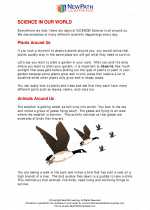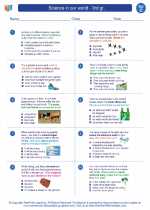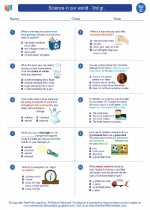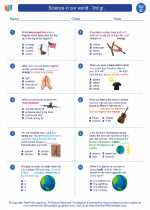Cartilage: A Study Guide
Cartilage is a type of connective tissue found in the human body. It is a firm, flexible tissue that provides support and protection to various structures, such as the joints, ears, nose, and airways. Here are some key points to help you understand cartilage:
What is cartilage?
Cartilage is a tough, elastic tissue that is found in many areas of the body. It is made up of cells called chondrocytes, which are embedded in a matrix of collagen and proteoglycans. This unique composition gives cartilage its strength and flexibility.
Types of cartilage:
- Hyaline cartilage: Found in the joints, nose, and respiratory passages. It provides smooth surfaces for joint movement and flexibility to the nose and airways.
- Elastic cartilage: Found in the external ear and parts of the larynx. It is more flexible than hyaline cartilage due to the presence of elastic fibers.
- Fibrocartilage: Found in the intervertebral discs and certain joints. It is the strongest type of cartilage and provides both support and resilience.
Functions of cartilage:
- Provides cushioning and support to joints, reducing friction and preventing bone damage.
- Forms the framework for the nose and ears, maintaining their shape and structure.
- Assists in the smooth movement of bones at joints, facilitating mobility.
Importance of cartilage:
Understanding the structure and function of cartilage is crucial for maintaining overall joint health and preventing conditions such as osteoarthritis, a degenerative joint disease that affects cartilage.
Study Tips:
- Use diagrams or models to visualize the different types of cartilage and their locations in the body.
- Compare the properties of cartilage to other types of connective tissues, such as bone and ligaments, to understand their unique characteristics.
- Explore the role of cartilage in embryonic development and growth to appreciate its significance in human physiology.
By grasping the fundamentals of cartilage, you can gain a deeper understanding of the body's structural integrity and the importance of maintaining healthy cartilage for overall well-being.
[Cartilage] Related Worksheets and Study Guides:
.◂Science Worksheets and Study Guides Third Grade. Science in our world - 3rd gr.

 Worksheet/Answer key
Worksheet/Answer key
 Worksheet/Answer key
Worksheet/Answer key
 Worksheet/Answer key
Worksheet/Answer key
 Worksheet/Answer key
Worksheet/Answer key
